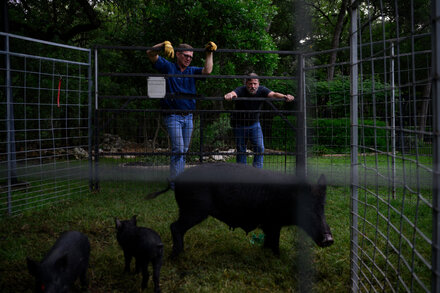Also known as wild pigs or boars, feral hogs pose a significant ecological and agricultural challenge worldwide. Their rapid expansion and destructive behaviors demand urgent attention and complex management strategies.

Feral hogs, also known as wild pigs or wild boars, represent a significant ecological and agricultural challenge across various regions globally, particularly within the United States. These opportunistic omnivores are descendants of domestic pigs that have escaped captivity and adapted to wild environments, as well as European wild boars introduced for hunting. Their populations are robust and rapidly expanding, driven by high reproductive rates, adaptability, and a notable lack of natural predators in many areas.
Ecological and Agricultural Damage
The destructive activities of feral hogs are extensive. Their rooting behavior, where they use their snouts to dig for food, causes substantial damage to crops, pastures, and natural ecosystems. This rooting can destroy delicate root systems, degrade soil quality, and compromise agricultural yields. Estimates suggest billions of dollars in damage annually to agriculture in the United States alone. Beyond direct crop destruction, feral hogs are vectors for numerous diseases transmissible to livestock and humans, including brucellosis, leptospirosis, and pseudorabies.
Impact on Biodiversity
Feral hogs pose a serious threat to native plant and animal species. They prey on ground-nesting birds, their eggs, and fawns, and compete with native wildlife for food resources. Their disturbance of habitats can alter plant communities, facilitate the spread of invasive species, and degrade water quality through wallowing and defecation, impacting aquatic ecosystems.
Population Dynamics and Spread
Feral hog populations are characterized by their rapid growth. Sows can produce multiple litters per year, with an average of four to six piglets per litter. Their intelligence and adaptability allow them to thrive in diverse habitats, from dense forests to agricultural lands. Historically introduced by European settlers for food and sport, their spread has been exacerbated by illegal translocation by humans, moving them to new areas for hunting purposes, often unknowingly creating new infestation points. Texas is particularly affected, with millions of feral hogs, but their range now extends across at least 35 states in the U.S.
Control and Management Efforts
Controlling feral hog populations is a complex and ongoing challenge. Various methods are employed, often in combination, including trapping, aerial gunning, and targeted hunting. Research into effective toxicants is also underway, though their use is often met with concerns regarding non-target species. Public awareness campaigns aim to educate landowners and hunters about the risks of feral hogs and the importance of preventing their further spread. Despite concerted efforts by state and federal agencies, eradication remains elusive in most established areas, leading to a focus on population management to mitigate their impacts.
Conclusion
The ongoing presence and expansion of feral hog populations underscore a persistent environmental and economic concern. As these adaptable animals continue to proliferate, the need for comprehensive, integrated management strategies becomes ever more critical to protect agricultural livelihoods, conserve biodiversity, and safeguard public health.
Source: Read the original article here.





